LOST 007 - In The Beginning
Before starting the episode watch, a summary of things I believe are true. A story of The Island and The Advocate. Unpacking the TV show LOST.

Note: this essay was originally published on Revue on March 6, 2022.
We’re very close to the beginning now.
I’m going to do something new. Rather than bring in new observations I’m going to rely entirely on the Belief end of our dialectic. Those beliefs will be grounded in large part on observations I’ve already made, but some of the beliefs are ones I haven’t touched upon yet.
You may read this and think, from time to time, “wait, when did he make the case for that?”
Easy. I haven't—yet.
After this, I’m probably going to take a break for a while, in order to discuss the episodes of Sugar Maple, the fictional podcast starting Fred Savage, with a story developed by me, my partner in crime Ben Colmery, and Phish lyricist Tom Marshall. I wrote many episodes of Sugar Maple, which is premiering on March 15—nine days from now, in my opinion.
You can subscribe right here and in all the other places.
Then we’ll return, armed with our buried backstory, to finally and at last cover Season 1 of LOST.
Here we go.
O B S E R V A T I O N
Here are the most important observations already observed:
1) The surface narrative of LOST‘s six seasons can be stated clearly: A group of seemingly unrelated people come by seeming accident to an island, where they begin to suspect that they are parts of a much larger story, a story in which they’ve been entangled without knowing it their entire lives. They fight and struggle and often die to learn what that larger story is, and what their part in it is. By the end, they have learned as much as they will ever know about that larger story, and have either fulfilled their part of that story, or they haven’t.
Also, Jack is kind of a dick.
2) The underlying conflict is a contention between two godlike entities, The Island and The Adversary.
The Island, who has dominion over The Adversary, holds a perspective that suggests It sees this contention less as a conflict, and more as a process with a single ending, with progress as a goal. One might do well to think of an experiment.
The Adversary, who resents the constraints of that dominance, sees the contention as an endless cyclical argument over the worthiness of humanity, or over humanity’s ability to improve and become better than it is, and its goal is simply to end the argument by ending reality.
3) There exists ample evidence within the story that the story of LOST spans far, far beyond even the most far-reaching activity of the six seasons we watch—probably from the earliest days of human existence to the end, and likely far beyond that.
I have a belief about what the arc of that larger story is.
So let me tell you the first part of that story.
B E L I E F
1. IN THE BEGINNING was The Light.
The Light existed outside of space or time.
But there space and time were, all the same.
Space and time interested The Light,
Particularly the infinite possibility space and time could create.
.
And so The Light approached space and time.
Space and time were chaos.
The Light entangled itself with space and time.
The moment of entanglement happened
At a particular spot in time and space,
Which was all time and all space,
And therefore all particular spots.
Remember this particular spot.
.
“Check this out,” The Light said to the chaos of space and time.
“Let there be Light,” The Light said, and there was light.
There came a bang.
It was pretty big.
.
The Light’s entanglement brought order to space and time—all space, all time, all possibility.
All at once, everything existed.
The Light swallowed the chaos and held it within.
This created an unstable situation known as ‘reality,’
And which we call “the universe.”
It was a temporary situation.
The light saw that it couldn’t last more than 10 to 30 billion years.
Not long at all, but long enough.
.
The universe is dimensional. It is made of dimensions.
The dimensions are time and space and possibility.
The Light is consciousness. This consciousness is extra-dimensional.
Being outside of dimensions, The Light could manipulate dimensions,
And choose reality out of an infinite selection of possibilities.
You might say it sets the conditions of the experiments.
You might say it creates the rules of the game.
Depending on your perspective.
.
Remember that particular spot?
The Light moved in an orbit around the particular spot,
And, perhaps, an infinite array of others.
Its orbit was a set of all possible orbits.
The orbit described a sphere.
_
As it orbited, it gathered raw materials around itself,
And became a physical island.
Which was the physical manifestation of The Light.
“Now you and I are the same,” The Light said to the physical island.
And so The Light became The Island.
.
As the physical island gathered raw materials around itself, so raw materials were drawn, shell-like, around the sphere of its orbit.
A spherical shell of earth.
So The Earth became like The Island in form.
“Now you and I are the same,” The Island said to The Earth.
.
The Earth served as a protector of the physical island
From the chaos of cosmic happenstance.
The physical island orbited inside the Earth,
Peeking out only at the extremities of its orbit.
The smaller was the greater power, orbiting within the larger,
Which was the lesser.
The two of them, interacting relationally,
Yet never interfering with one another on the physical plane.
.
At the physical island’s center lies The Light.
Within reality, The Light manifests as a great nexus of power that exists outside of space and time.
The nexus is made of cosmic power. To release it would create a singularity that would eat the universe.
The nexus is made of consciousness, and thus it draws all consciousness to it in a sort of spiritual gravity.
The nexus holds the chaos,
While it can.
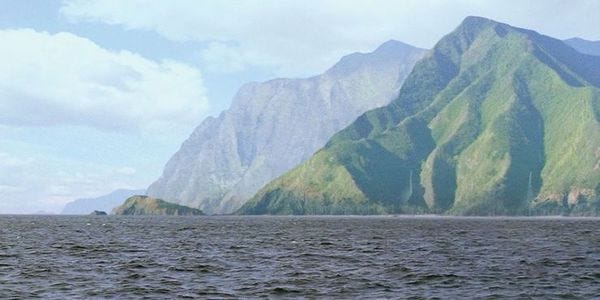
2. The Island has a will.
We might name that will “love.”
The Island, having created reality out of chaos
Wanted to demonstrate to itself
That reality sprung from chaos could, in time, share that will.
To test the idea, The Island needed a being capable of making choices.
.
The Island realized that the nature of its power created a challenge.
To do more than to observe would destroy the test.
To only observe created choice.
But that choice allowed the possibility of failure.
.
The Island was not concerned with failure.
The Island was interested in progress.
.
So, out of the chaos of space and time, The Island made The Creature.
The Creature had the ability to commune effortlessly with The Island.
Its form was serpentine.
Its body was fire.
.
The Island gave The Creature a measure of its own light.
“Now you and I are the same,” The Island told The Creature.
.
The Island loved the Creature.
The Creature loved The Island.
They lived together for a long time.
In this way The Island learned that The Creature could enact love
Of the lesser to the greater.
But The Island did not know if The Creature could enact love
Of the greater to the lesser.
So The Island decided it was not good for The Creature to be alone.
.
The Island made people.
The people were The Island’s gift to The Creature.
The Island gave the people a measure of its light.
“Now you and I are the same,” The Island told the people.
“Now you are their Advocate,” The Island told The Creature.
So The Creature became The Advocate.
.
But The Advocate lived as long as the universe,
While the people lived an even shorter time than that,
Which to The Advocate was almost nothing at all.
So The Island made a spring-fed river, flowing out of its light.
The river’s waters spread throughout the physical island.
They bestowed ongoing health and extended life to the people.
The river was The Island’s gift to the people,
As the people were The Island’s gift to The Advocate.
.
The Island loved the people.
But the people could not commune with The Island as The Advocate did.
The people communed with their Advocate.
The Island’s test had reached another phase.
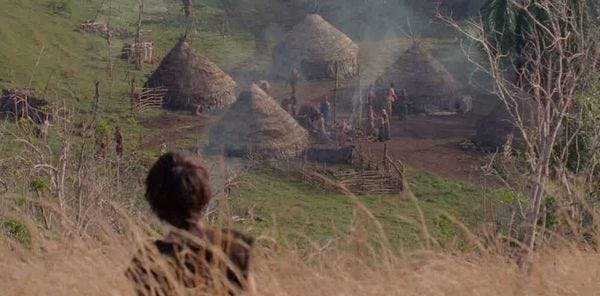
3. The Advocate received a measure
of The Island’s own power, which was the power to shape reality
Out of time and space and possibility.
To create rules.
.
It gave The Advocate many abilities:
To appear in incorporeal form as any person who had died;
To channel their being and bridge the chasm of death for those still alive;
To know a person’s thoughts;
To perceive an expansive vista of time and space and possibility.
The Island spoke to The Advocate, and The Advocate spoke to the people.
Thus The Island delivered to the people the first rule.
.
There existed only one constraint upon the people.
They were never to enter the light without invitation.
.
The constraints upon The Advocate were three.
It wasn’t to enter the light without invitation.
It wasn’t to allow the people into the light without invitation.
It wasn’t to kill the people.
.
The Island made each person to accomplish a purpose.
The people lived on The Island until they discovered their purpose.
They then accomplished their purpose, according to their own plan.
The Island delighted to watch how they accomplished the purpose.
.
Once each person had accomplished their purpose,
The Island allowed them to explore The Earth, and invited them into its light.
After days or centuries of exploring The Earth,
Each person would accept the invitation,
And they would pass into the light, and cease to be what they had been,
And become something else.
.
So there was life and there was death, in the first days.
.
The Island invited many people into its light.
But never The Advocate.
The Advocate came to long for that invitation.
But The Island knew that his test was incomplete.
.
The Advocate knew the people’s understanding of The Island was not as great as its own,
So The Advocate began to understand the people to be less worthy than itself.
Yet the people received the gift The Advocate most desired.
.
“What about me?” asked The Adversary.
“What about you?” replied The Island.
.
This is how The Advocate came to despise the people The Island made.
This is how The Advocate came to resent The Island.
It became The Adversary.
The Adversary devised a plan
To prove the unworthiness of the people to The Island.
.
The Adversary realized that the ability to know the thoughts of people
Made it easy to control the actions of people.
The Adversary came to one of them.
It convinced one of the people to divert a part of the river into a pool.
And that person convinced others.
.
The Adversary used these people to enter the chamber
From which the river flowed.
They pierced the floor of the Chamber
To harness its light.
One of them, to save the physical island, and the universe
Plugged the wound with a shaped stone.
.
In so doing, the people and The Adversary entered the Light uninvited.
This had consequences for them both.
The price for the Adversary for this infraction was the loss of Its body.
Its form, still serpentine, became a smoke-like wraith of its former glory.
The communion it had with The Island’s consciousness became a torture.
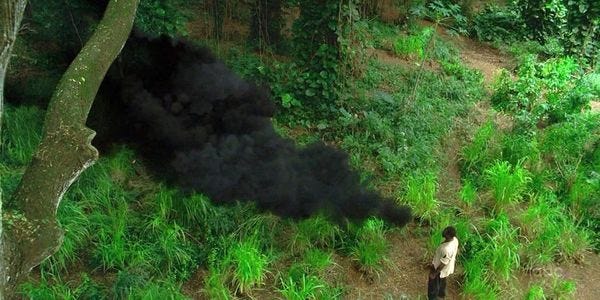
4. The price for the people
was loss of their life with purpose unfulfilled.
Their spirits remained on the island,
A whisper of themselves.
.
Those whispers followed their former Advocate.
But The Adversary discovered it could physically incarnate as a person.
Whose body rested on the physical island
And who had been exposed to The Island’s light.
.
The Adversary used Its gifts to convince people to use Its pool.
The people, believing themselves to be acolytes of The Island,
Built a temple around the pool.
Those guardians who The Adversary convinced to use its pool
Allowed themselves to become infected with Its will.
.
The Adversary used this loyalty to trick the infected into killing others whose purposes were unfulfilled.
To create war between the infected and the uninfected.
And so, as time went on, The Adversary could appear as more people,
and more,
and more.
.
The Island realized it was not good for people
To live on the physical island with such a fallen Advocate.
So it was that The Island sent people away from itself
To live on the island’s protector, which was The Earth.
And The Island and The Creature were alone once more.
.
The Adversary, alone again with The Island, was satisfied.
And once more considered itself The Island’s protector.
The Island continued its communion with The Creature.
To whom it gave this message: the people you despise are worthy.
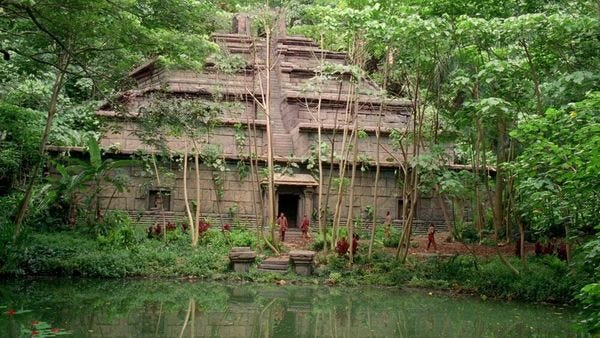
5. Over the centuries and millennia,
The Island drew people to itself.
To test The Adversary, to see how it would progress.
.
In order to make the proof of the test all the more certain
The Island chose the most flawed Candidates it could find;
People who were very far from their purpose.
And The Adversary corrupted the people It despised,
To prove to The Island that people were worthy only of final destruction.
.
The Adversary hated the people The Island brought.
Who came, and fought, and destroyed.
And who were corrupted.
The Adversary hated the people,
Because it always ended the same,
And so the Adversary came to hate The Island most of all.
.
It would appear to the Candidates in different guises.
It would read their thoughts and tell them useful truths and useful lies.
It would tell them It was The Island, and that they were its chosen, more special than the rest,
Selected for a higher calling than all the others.
.
The Adversary knew The Island well. It was adept at mimicry.
It was difficult for the people to know The Island from the Adversary.
Even the infected believed themselves loyal to The Island
They weren’t.
.
A group of fleeing Egyptian slaves were drawn.
To them it seemed that the sea opened to allow them passage.
They built a great statue to The Island.
After forty years, some returned from The Island, and reported of a paradise lost and unfindable, watered by a river, guarded by an angel.
Of divine edicts broken.
Of forbidden fruit tasted.
Of a serpent that deceived.
Of a people cast out.
They told of wonders and miracles and long-lived fathers and grandfathers.
And of a massive flood.
And of a time of wandering.
Of a series of spokespeople for a God whose name was breath.
Of a delivery of rules.
Of being led by a pillar of fire
And then by a pillar of smoke.
.
So the cycle would perpetuate
The Island drew the people; The Adversary corrupted them,
Pitted them against each other,
Found the neediest of them, the least satisfied,
Told them they were the special ones, chosen, better than the rest.
Told them the same lies that It told Itself.
That they were the ones The Island had chosen to make all rules
Because The Island loved only them.
.
From each new group of Candidates, The Adversary would select
A chosen special one to meet Its own ends.
To install them as leader,
To guide them by appearing as someone beloved but dead.
To trick them into believing they were following the voice of The Island
While all the time compelling them to do Its will.
.
An observable cycle began.
.
Each cycle, The Adversary compelled the people,
Amplified their natural curiosity about the light and the water,
Created strife between them, made them kill each other,
Exposed each chosen “special” one to the light,
Left their body on the physical island,
Then took on the form and aspect of the most recent “special” one
When all the rest were gone.
.
It always ended the same.
.
But The Island was unperturbed.
It seemed immune to any disappointment the people could deliver.
And The Island remained patient with its Creature.
It seemed to regard The Adversary’s infractions with curiosity.
The Island was interested in progress.
And this was progress, of a kind.
.
The Adversary came to inhabit the being of a woman,
One of his “special” ones
Who came from another place, another time.
This woman hated people much as The Adversary did.
She had her reasons.
.
In time The Adversary grew weary of this existence,
But it couldn’t die.
So it made a new plan.
The plan was to destroy existence.
The way to destroy existence was to destroy The Island.
.
It believed that in order to enact this plan
It would have to separate its consciousness
From that of The Island.
.
The time came when a woman arrived on the island
Pregnant with twin babies,
And The Adversary knew its opportunity had finally come.
L O S T
NEXT TIME: You All Everybody
_____
A.R. Moxon is the author of The Revisionaries, which is available in most of the usual places, and some of the unusual places. The party of the first part shall be known in his contract as the party of the first part.

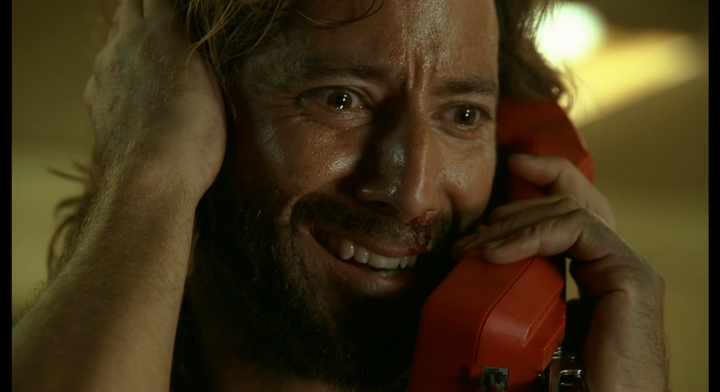
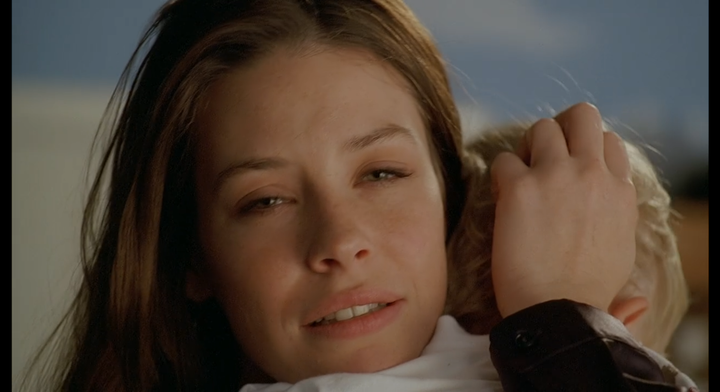
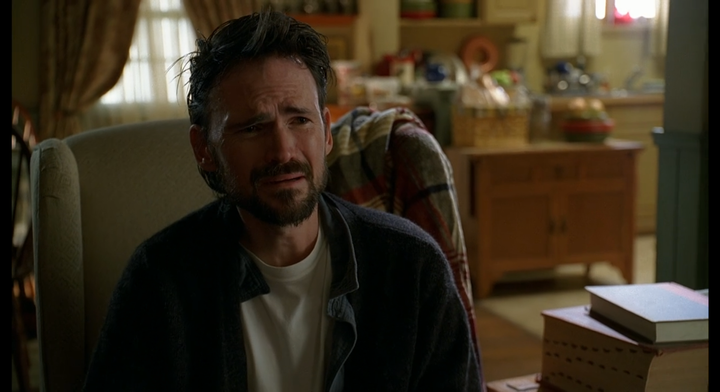
Comments ()